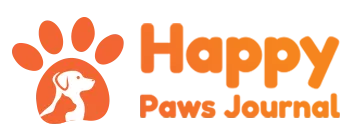Keeping your dog well-groomed is essential for their health, comfort, and appearance. One of the most important grooming tools you need is a dog grooming brush. However, with so many options available, selecting the right one for your pet can be overwhelming. This guide will help you understand the different types of dog brushes, how they work, and how to choose the best one based on your dog’s coat type.
Table of Contents
Why Grooming is Important for Your Dog

Regular brushing offers multiple benefits, including:
- Reducing Shedding – Removes loose fur before it spreads around your home.
- Preventing Matting and Tangles – Especially crucial for long-haired breeds.
- Distributing Natural Oils – Keeps the coat shiny and healthy.
- Improving Circulation – Gentle brushing stimulates blood flow to the skin.
- Bonding Time – A great way to strengthen the connection with your pet.
Types of Dog Grooming Brushes
1. Slicker Brushes
Slicker brushes have fine, short wires close together. They are great for removing tangles, mats, and loose hair.
Best for:
- Dogs with medium to long hair (e.g., Golden Retrievers, Poodles, and Cocker Spaniels).
- Dogs prone to matting and tangles.
2. Bristle Brushes
These brushes have tightly packed natural or synthetic bristles. They help distribute natural oils and remove loose hair.
Best for:
- Short-haired breeds like Boxers, Beagles, and Chihuahuas.
- Smoothing out the coat and adding shine.
3. Pin Brushes
Resembling a human hairbrush, pin brushes are great for removing debris and loose fur while detangling the coat.
Best for:
- Dogs with medium to long hair like Shih Tzus and Lhasa Apsos.
- Dogs with fine hair that need gentle brushing.
4. Undercoat Rakes
Designed with long metal teeth, undercoat rakes help remove the thick undercoat without damaging the top layer.
Best for:
- Double-coated breeds such as Huskies, German Shepherds, and Samoyeds.
- Heavy shedders that require regular grooming.
5. Rubber Curry Brushes
Made of rubber, these brushes work by gently massaging the skin and removing loose fur.
Best for:
- Short-haired breeds like Bulldogs and Dalmatians.
- Dogs that enjoy a soothing massage during grooming.
How to Choose the Right Dog Grooming Brush
Consider Your Dog’s Coat Type
- Short hair: Bristle or rubber brushes work best.
- Long hair: Slicker or pin brushes are ideal.
- Double coat: An undercoat rake helps manage shedding.
Think About Your Grooming Goals
- Shedding control: Use an undercoat rake or slicker brush.
- Detangling: Opt for a slicker or pin brush.
- General grooming: A bristle or pin brush is effective for daily maintenance.
Comfort and Ease of Use
- Ergonomic handle: Reduces strain on your hand.
- Self-cleaning feature: Makes maintenance easier.
- Rounded tips: Prevents irritation on sensitive skin.
Step-by-Step Guide to Brushing Your Dog
- Prepare Your Dog – Ensure they are calm and in a comfortable environment.
- Choose the Right Brush – Match the brush to your dog’s coat type.
- Brush in the Direction of Hair Growth – Prevents discomfort and breakage.
- Be Gentle on Sensitive Areas – Like the belly and behind the ears.
- Clean the Brush Regularly – Removes excess fur and prevents buildup.
- Reward Your Dog – Treats or praise make grooming a positive experience.
Best Dog Grooming Brushes Available Online
Here are some highly-rated dog grooming brushes you can find on Amazon:
- Hertzko Self-Cleaning Slicker Brush – Ideal for detangling and removing loose hair. Check on Amazon
- FURminator Undercoat Deshedding Tool – Perfect for double-coated heavy shedders. Check on Amazon
- BV Dog Brush and Cat Brush – A dual-sided option for both shedding and smoothing. Check on Amazon
Frequently Asked Questions (FAQs)
How often should I brush my dog?
It depends on the breed. Short-haired dogs need brushing once or twice a week, while long-haired breeds require daily brushing.
Can I use a human hairbrush on my dog?
No, dog brushes are designed specifically for pet coats and skin, making them more effective and safe.
How do I clean my dog grooming brush?
Use warm water and mild soap to clean the brush after every few uses. Some brushes have self-cleaning features.
What if my dog doesn’t like being brushed?
Start with short sessions, use positive reinforcement, and try a softer brush to make the experience pleasant.
Conclusion
Choosing the right dog grooming brush is essential for keeping your pet’s coat healthy and tangle-free. Understanding your dog’s coat type and selecting a brush that suits their needs will make grooming more effective and enjoyable for both you and your furry friend. Happy grooming!



